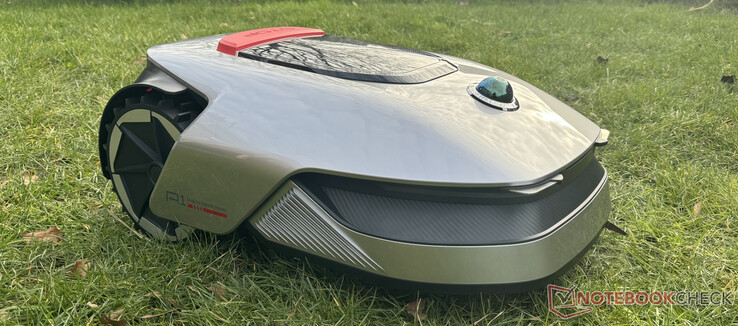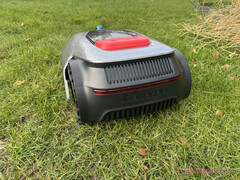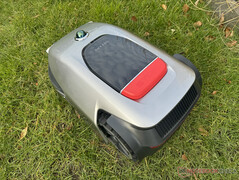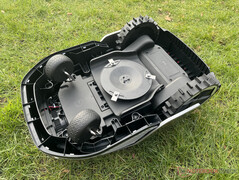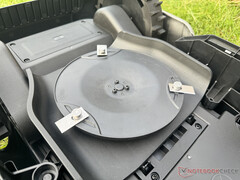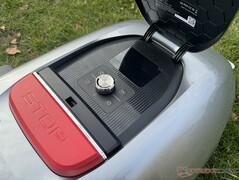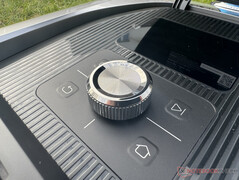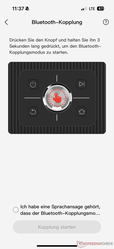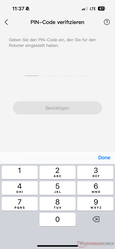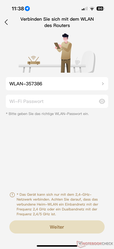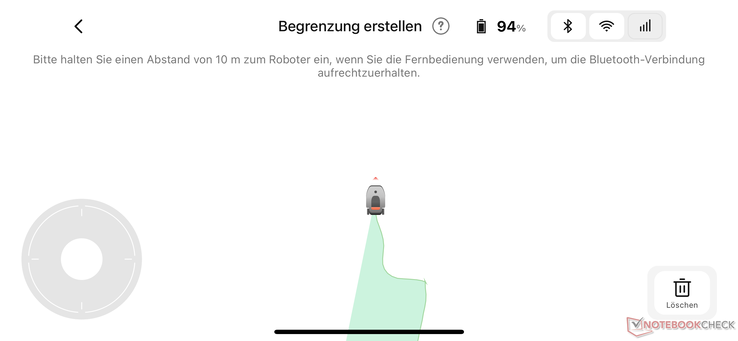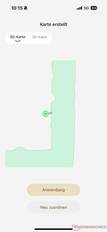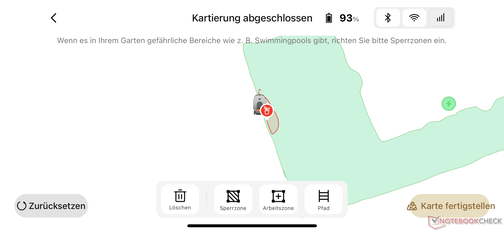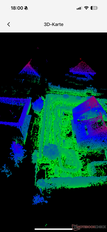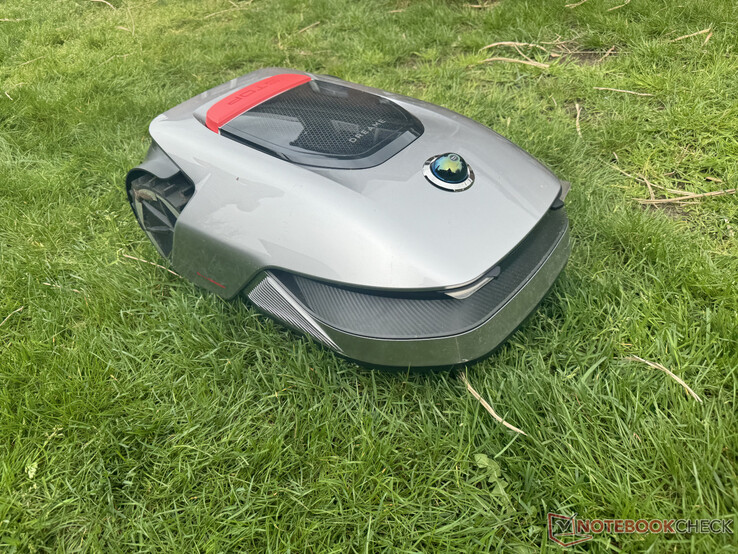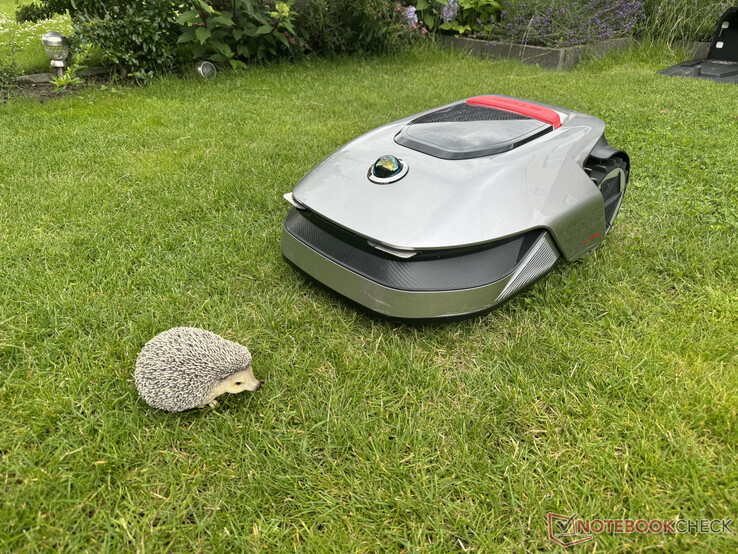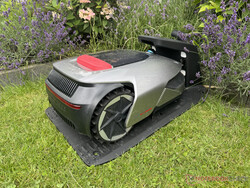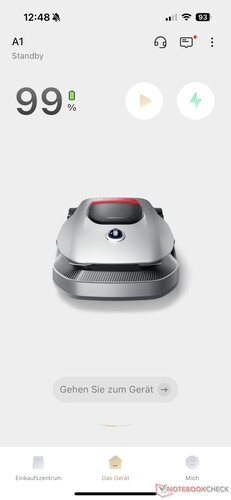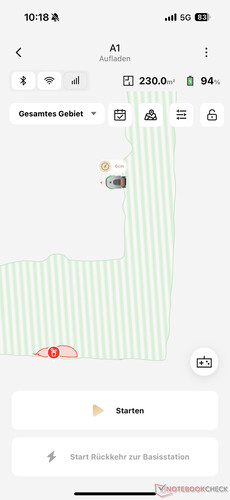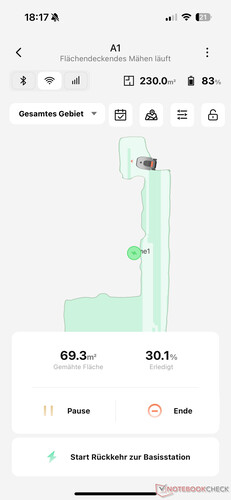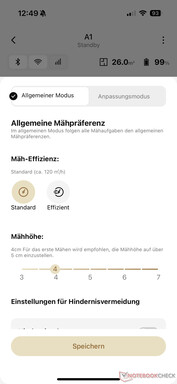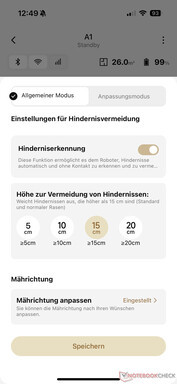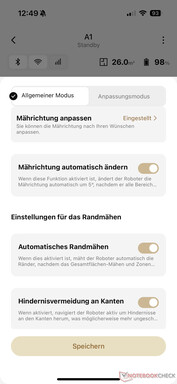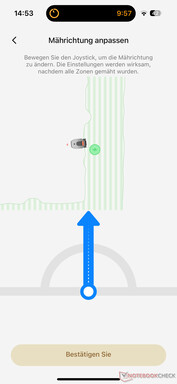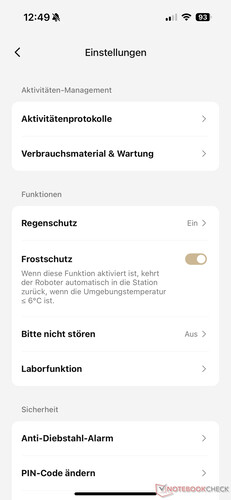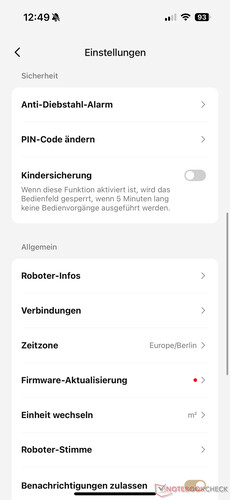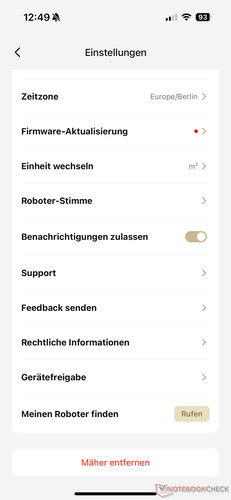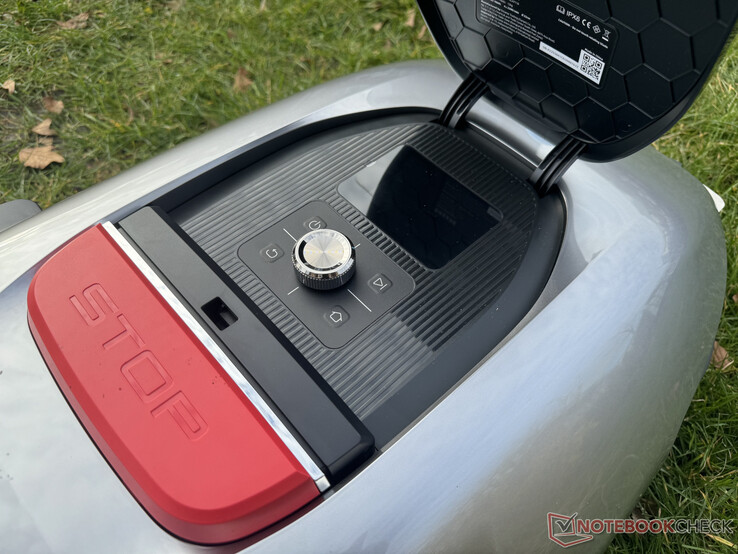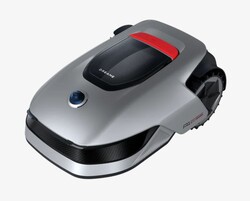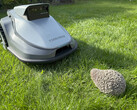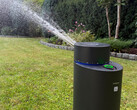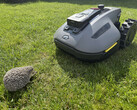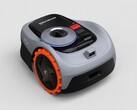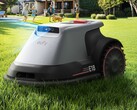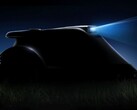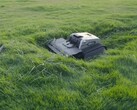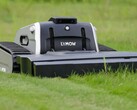Dreame A1 in review: Wireless robot lawnmower in Porsche design relies entirely on lasers - a good choice?
Dreame recently presented its first robotic mower, the Roboticmower A1. The manufacturer, which is primarily known for its vacuum robots, is thus conquering new territory and now wants to focus not only on indoor floor cleaning but also on outdoor garden maintenance.
The new Dreame A1 not only has a chic design that reminds us of Porsche sports cars but also has a number of special features, including positioning and navigation. Our Dreame A1 review reveals how well the new wireless robotic lawnmower performs in practice.
Features: Dreame A1 relies on laser instead of camera and GPS
In the recent past, various robotic lawnmowers without a perimeter wire have come onto the market. Many of them rely on RTK-GPS, including the Navimow i105 (999 euros on Amazon). Alternatively, the Ecovacs Goat G1 (from 1,099 euros on Amazon) uses its own navigation beacons. Both have the disadvantage that at least one antenna has to be set up in the garden. This is significantly less effort than laying a perimeter wire but is still a potential visual nuisance.
Dreame takes a different approach and relies entirely on LiDAR technology, which is the current standard for robotic vacuum cleaners. However, the floor cleaners for indoors operate in closed rooms, while the A1 has to navigate and move around outside walls in more or less open spaces. How well the OmniSense 3D Ultra sensor system works is described below in our Dreame A1 test.
First, a few more details about the features of Dreame's first robot mower. In addition to its chic but rather delicate high-gloss design, which is reminiscent of Porsche electric cars, especially at the rear, the A1 has a cutting width of 22 cm and a cutting height of 3 to 7 cm that can be adjusted via app. The three blades mounted on a rotating disk can be changed in seconds without tools.
The IPX6-protected robot mower, which weighs approx. 12 kg and unfortunately has no handle for transportation, contains a 5 Ah battery. The cordless robot mower is designed for areas of up to 2,000 square meters. In addition to the robot itself, the scope of delivery includes the obligatory charging station with power cable and eight screws for fixing to the ground, a cleaning brush, nine replacement blades that can be changed without tools, and the usual instructions.
Impressions of the Dreame A1
Setup: Wireless robotic lawnmower is quickly ready for use
Before the Dreame A1 can do its job independently for the first time, it must first be set up. However, this can be done quickly and worked without any problems during the test.
As the Dreame A1 is a robotic lawnmower without a perimeter wire, there is no need for time-consuming installation. Even an RTK station like the Navimow i105E/i108E or radio beacons like the Ecovacs Goat G1 do not have to be set up first. Only the charging station needs to be placed according to the instructions in the manual and connected to a socket using the long power cable.
The robot then needs to be connected to the Dreame app for iOS or Android. This also went quickly in the self-experiment, which is why we only show the process with a few screenshots.
All that remains is the obligatory introductory lap. To do this, the Dreame A1, like almost all other wireless robotic lawnmowers, must be driven once around the area to be mowed. This is done using a virtual joystick on the smartphone, which the robot follows like a remote-controlled car.
Unlike some other models, the Dreame A1 does not offer automatic AI detection of the mowing boundaries. However, according to our practical experience, it can be steered much more precisely along the mowing edges than some other models, as it drives quite slowly, does not react extremely sensitively, and is only steered with one instead of two controllers on the touchscreen of the cell phone. The result is a virtual map that can also be viewed in 3D. Optionally, several zones with different settings and restricted areas can be created.
Mowing and obstacle detection: Dreame A1 reveals problems in the test
Up to this point, the Dreame A1 has made a consistently good impression. Ultimately, however, the decisive factor in the robotic lawnmower test is what happens on the field. Here, unfortunately, it leaves a few feathers or points behind.
The basic navigation over three different test lawns was largely systematic and in straight lines. The cutting pattern is clean and even. In some places, the working sequence was not really comprehensible or the robot later mowed areas that were initially left out. There are only a few small deductions in the B grade here.
However, passages should not be too narrow, because from approx. 1 m it became too narrow for the Dreame A1 in the robotic lawnmower test and it did not approach the areas. In addition, the grip of the wheels sometimes left something to be desired on somewhat greasy surfaces, especially as they then quickly became clogged. This does not bode well for steeper climbs. It can be easily cleaned with a garden hose and the brush provided.
Edge mowing works well in the test, although there are the usual problems here. The mower is positioned in the middle and therefore around 11 cm away from the edge of the housing. It also makes a wide berth around any obstacles it detects. In the end, however, some grass is always left standing if the robot cannot drive completely over the edge of the lawn on a level transition. However, virtually all robot mowers have this problem, so the Dreame A1 cannot really be blamed for it.
A practical feature is that obstacle detection can be deactivated in the settings when mowing the edge. It then mows the plot relatively precisely within the set boundaries with minor inaccuracies and does not shy away from plants protruding from adjacent beds. This improves the overall result but can damage the high-gloss appearance of the Dreame A1 over time if there is a lot of vegetation around the edges.
However, the Dreame A1 revealed major problems in the test concerning obstacle detection. Here, Dreame's decision to do without a camera falls on its feet. The laser can detect larger obstacles, such as trees and bushes. People standing in front of it were also detected. In the practical test, however, it reliably failed to detect smaller challenges.
Different levels for obstacle detection can be set in the app, from 10 to 15 to 20 cm. This should influence how reliably the robotic lawnmower approaches areas with taller grass. Indeed, with the high setting, it sometimes left out areas in the test where the grass or weeds protruded too high from the mowing area at certain points. Other robotic lawnmowers are not so squeamish here.
Even more serious, however, is the fact that it did not recognize obstacles such as a realistic hedgehog figure even once during the test. Neither at the smallest obstacle level of 10 cm nor at the level of only 5 cm that can be activated as a laboratory function. The hedgehog was run over every time. Many other obstacles, such as a ball the size of a handball, were also not recognized. The robot did "see" soccer in three out of six attempts, but only when it was centered in front of the laser.
We carried out the tests with the latest firmware version 4.3.6_1327 at the time. In the recent past, Dreame had already rolled out some improvements via software updates and will certainly continue to do so. It remains to be hoped that there will be further optimizations here too, although the system is already technically limited in terms of obstacle detection with only a laser and without a camera.
Battery and noise: A good 200 square meters per battery charge
The Dreame A1 is designed for areas of up to 2,000 square meters. With one battery charge, the Dreame Robotic mower A1 mowed for around 2.5 hours in our test and covered an area of a good 200 square meters in the standard setting (Alternative Efficient) during this time.
If the Dreame A1 returns to the charging station to stop charging with the battery reduced to 15 percent, the charging process to 100 percent only takes around one and a half hours. A total of approx. 0.1 kWh flows into the battery at a charging speed of up to 77 W.
If we extrapolate this, the A1 from Dreame would cover around 700 square meters with 12 hours of mowing time per day, meaning it would have completely covered the targeted 2,000 square meters every three days. However, the area coverage is of course also dependent on the nature of the area and can vary depending on the shape of the plot and, of course, the settings and mowing times.
When the robot is fully charged on the station and waiting for the next use, the standby consumption is around 4 W. The power consumption of the station without the robot mower docked is 0 W, as no RTK station or similar needs to be supplied with power. If we extrapolate this, the power consumption for 12 hours of operation per day is just under 0.35 kWh per 24 hours.
We measured the noise level during operation at around 58 dB (from a distance of 1 meter), whereby the noise level is, as always, heavily dependent on the mowing activity and therefore the height of the grass. This means that the Dreame A1 is not one of the quietest robot mowers, but it is not particularly loud either.
App: Sophisticated fare also for robotic lawnmowers
Thanks to our experience with robotic vacuum cleaners, the Dreame app is now fully developed. This also applies to the device entry for the A1, which can be found there after setup and allows the robot mower to be managed. In the overview, the robot can not only be sent to work or to charge but the battery status can also be viewed.
The detail screen then shows the virtual maps of the mowing area in the usual manner, including color-coded, but sometimes incomprehensible work progress and detected obstacles (with WLAN connection) when the Dreame A1 is doing its job. Here you can also see the area already mowed in square meters and percentages.
Dreame offers a whole range of options when it comes to work settings. The mowing height can be set electronically between 3 and 7 cm via the app, and the mowing efficiency can be selected in two stages. There are three (four with the laboratory version) levels to choose from for obstacle avoidance, which can also be played around with to find the ideal compromise for your own garden. There are also other options such as adjusting the mowing direction and edge mowing.
Some settings can also be made via the display and the control unit with its stylish rotary wheel, which are concealed under a cover. However, access is only possible by pressing the large STOP button for the emergency stop. If this is pressed, the flap pops open and allows access. However, the PIN must then always be entered first as an anti-theft device, which is somewhat annoying.
Pro
+ very easy to set up without boundary cables and antennas
+ systematic mowing
+ obstacle detection can be deactivated for edge mowing
+ comprehensive and sophisticated app
+ chic but sensitive design
+ hteft protection
Contra
- wide mowing edge for transitions not at ground level
- weakness in the detection of obstacles
- slight weakness in traction
Verdict: Smart robot lawnmower, but not without flaws
The Dreame A1 is the first robotic lawnmower from the manufacturer known primarily for its robot vacuum cleaners. The step from indoor to outdoor is a relatively big one. Dreame is also trying to use LiDAR technology in the garden, which means no additional antennas are required and which worked quite well in some of the practical tests.
While the laser technology usually works well for navigation, it fails in many cases when it comes to obstacle detection. For example, the Dreame A1 is a danger to hedgehogs as well as children's toys and other objects lying around.
Earlier models with perimeter wire had the same problems. However, modern robotic lawnmowers with cameras for detecting obstacles now work much more reliably than Dreame's first model. However, if you only use the robot during the day and have few or no obstacles such as toys and the like lying around, you should have relatively few problems with this. The app is well developed.
If we then factor in the recommended retail price of 1,999 euros, we inevitably come to the conclusion that there are certainly better, but at least hardly more stylish robotic lawnmowers on the market for this money. Overall, the A1 is a solid debut robot mower from Dreame, but it clearly still has room for improvement. For a successor, we would like to see a combination of LiDAR and camera, as Dreame already uses very successfully in its robot vacuum cleaners.
Price and availability of the Dreame Roboticmower A1
Transparency
The selection of devices to be reviewed is made by our editorial team. The test sample was provided to the author as a loan by the manufacturer or retailer for the purpose of this review. The lender had no influence on this review, nor did the manufacturer receive a copy of this review before publication. There was no obligation to publish this review. As an independent media company, Notebookcheck is not subjected to the authority of manufacturers, retailers or publishers.
This is how Notebookcheck is testing
Every year, Notebookcheck independently reviews hundreds of laptops and smartphones using standardized procedures to ensure that all results are comparable. We have continuously developed our test methods for around 20 years and set industry standards in the process. In our test labs, high-quality measuring equipment is utilized by experienced technicians and editors. These tests involve a multi-stage validation process. Our complex rating system is based on hundreds of well-founded measurements and benchmarks, which maintains objectivity. Further information on our test methods can be found here.




